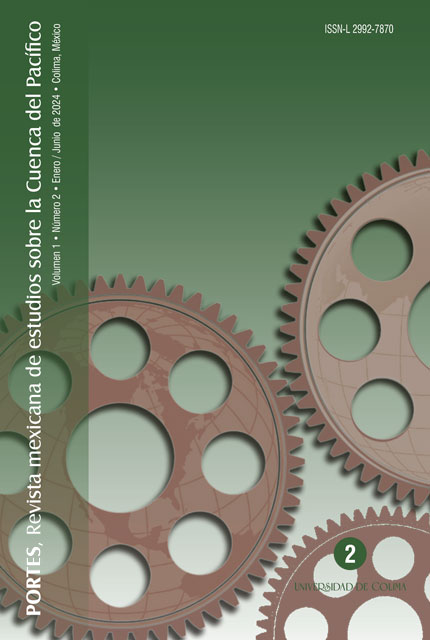China: innovation and war technology development
DOI:
https://doi.org/10.53897/RevPortes.2024.02.04Keywords:
securitization, war technology, special economic zones, geostrategic spaces, tradeAbstract
Technological development is one of the main axes of any economy, and in China, industrialization processes together with securitization are part of its strategic development. Currently, China has kept out of any armed conflict and was even the mediating country that solved the problem between the countries of Central Asia. China's policy is based on diplomacy, staying out of any war problem. Despite the above, it has not neglected its military apparatus and much less the technological development of armaments, being the second country that invests the most in this sector after the USA. Therefore, the objective of this study is to analyze the development and innovation of the war industry in this country and its impact on the world. The study is of a documentary type and uses the analytical-descriptive method based on specialized literature with the purpose of examining the existing projects that, despite its policy of non-intervention, continues to allocate a large part of its budget to this sector.
Downloads
Metrics
References
Amin, S. (1994). Capitalismo, imperialismo, mundialización. CLACSO.
Arancón, F, (28 de marzo de 2014). El collar de perlas de China: geopolítica en el Índico. El Orden Mundial. https://elordenmundial.com/el-collar-de-perlas-chino/
BBC (22 de enero de 2019). 3 nuevas armas de alta tecnología de China con las que desafía el poderío de Estados Unidos y Rusia. BBC Mundo. https://www.bbc.com/mundo/noticias-internacional-46803904
De la Cal, L. (13 de marzo de 2023). Un super ejército chino "de clase mundial" para ganar guerras. El Mundo. https://www.elmundo.es/internacional/2023/03/12/640a064efc6c832d608b459a.html
DICKEN, P. (1998). Global shift: transforming the world economy. London: Paul Chapman.
Dussel, P. (2015). China en América Latina. 10 casos de estudio. UNAM.
Gil, T. (30 de abril de 2020). Disputa en el mar de China Meridional: los avances de Pekín en las controvertidas aguas de Asia Pacífico en medio de la pandemia de coronavirus. BBC Mundo. https://www.bbc.com/mundo/noticias-internacional-52429581
Gilpin, Robert (1981). War and Change in World Politics. Cambridge University Press. DOI: https://doi.org/10.1017/CBO9780511664267
Harvey, D. (2000). Spaces of Hope. Edimburgh University Press.
Hoo T. B. (2017). Xi Jinping’s Calibration of Chinese Foreign Policy. Oxon: Routledge. DOI: https://doi.org/10.4324/9781315628981
PrensaLibre (27 de enero 2020). China es ya el segundo productor de armas del planeta. Prensa Libre. https://prensalibreonline.com.ar/index.php/2020/01/27/china-es-ya-el-segundo-productor-de-armas-del-planeta/
Stochkolm International Peace Research (2022). El gasto militar mundial supera los 2 billones de dólares por primera vez. SIPRI. https://www.sipri.org/sites/default/files/2022-07/milex_press_release_esp.pdf
Downloads
Published
How to Cite
Issue
Section
License
Copyright (c) 2024 University of Colima

This work is licensed under a Creative Commons Attribution-NonCommercial-ShareAlike 4.0 International License.
La revista PORTES de la Universidad de Colima se distribuye bajo una Licencia Creative Commons Atribución-NoComercial-CompartirIgual 4.0 Internacional





